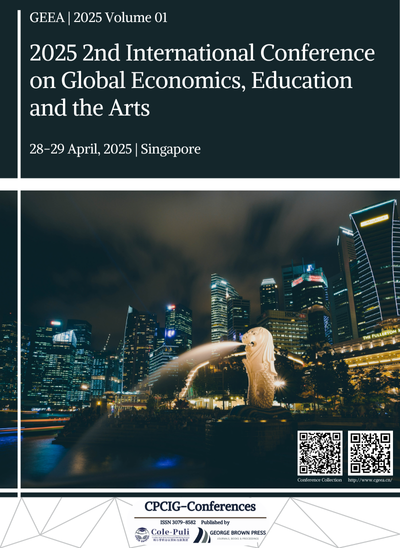The Impact of Social Media on Cross-Cultural Communication in the Digital Age
DOI:
https://doi.org/10.5281/zenodo.15534653Keywords:
social media, cross-cultural communication, cultural awareness, communication effectiveness, digital interactionAbstract
In the field of application of information technologies in special education, there are still a number of challenges to be addressed by measures such as increasing the level of teacher training, developing targeted resources, improving equipment and creating an effective assessment mechanism. Only in this way can we fully exploit the role of Information Technology in special education, promote its development, and improve its quality. As a result, every child with special needs will have the opportunity to receive fair and high-quality education.
References
1. S. Ryu, Y. Xiang, and W. Zhang, “Digital transformation of spatial experience in the cultural and creative industry: From entertainment to co-creation,” in Digital Transformation of Spatial Experience in the Cultural and Creative Industry, Thousand Oaks, CA: SAGE Publications, Inc., 2024. ISBN: 9781071909980.
2. Q. Tan, K. M. Kamarudin, and S. S. Herman, “Systematic review of empowering intangible cultural heritage with metaverse technology,” ACM J. Comput. Cult. Herit., vol. 18, no. 1, 2025, doi: 10.1145/3723169.
3. X. Chen, D. Zou, H. Xie, and F. L. Wang, “Metaverse in education: Contributors, cooperations, and research themes,” IEEE Trans. Learn. Technol., vol. 16, no. 6, pp. 1111–1129, Dec. 2023, doi: 10.1109/TLT.2023.3277952.
4. A. Martí-Testón, A. Muñoz, L. Gracia, and J. E. Solanes, “Using WebXR metaverse platforms to create touristic services and cultural promotion,” Appl. Sci., vol. 13, no. 14, p. 8544, 2023, doi: 10.3390/app13148544.
5. X. Li, X. Liang, T. Yu, S. Ruan, and R. Fan, “Research on the integration of cultural tourism industry driven by digital economy in the context of COVID-19—based on the data of 31 Chinese provinces,” Front. Public Health, vol. 10, p. 780476, 2022, doi: 10.3389/fpubh.2022.780476.
6. D. Buragohain, Y. Meng, C. Deng, Q. Li, and S. Chaudhary, “Digitalizing cultural heritage through metaverse applications: Challenges, opportunities, and strategies,” Herit. Sci., vol. 12, no. 1, 2024, Art. no. 295, doi: 10.1186/s40494-024-01403-1.
7. X. Lin and X. Chen, “Innovation in the digital cultural industry within the metaverse from the perspectives of physical and virtual mobility,” in CLOUD Comput. – CLOUD 2024, Y. Wang and L. J. Zhang, Eds., Lect. Notes Comput. Sci., vol. 15423. Cham: Springer, 2025, doi: 10.1007/978-3-031-77153-8_8.
8. X. Lin and N. Tao, “Audiobooks in the cultural metaverse: Reimagining new quality productive forces and the future of the audio culture industry,” in Metaverse – METAVERSE 2024, C. Xing, J. Lai, and L. J. Zhang, Eds., Lect. Notes Comput. Sci., vol. 15429. Cham: Springer, 2025, doi: 978-3-031-76977-1_10.
9. B. Dayoub, P. Yang, S. Omran, Q. Zhang, and A. Dayoub, “Digital silk roads: Leveraging the metaverse for cultural tourism within the belt and road initiative framework,” Electronics, vol. 13, no. 12, Art. no. 2306, 2024, doi: 10.3390/electronics13122306.
10. Ö. Özeren, B. Sultan Qurraie, and M. H. Eraslan, “Preserving cultural heritage with digital design and NFT technologies: Innovative approaches in architectural education,” DEPARCH J. Des. Plan. Aesthet. Res., vol. 3, no. 2, pp. 161–175, 2024, doi: 10.55755/DepArch.2024.32.
Downloads
Published
Issue
Section
License
Copyright (c) 2025 Tao Sun (Author)

This work is licensed under a Creative Commons Attribution 4.0 International License.



